
The Arctic National Wildlife Refuge or Arctic Refuge is a national wildlife refuge in northeastern Alaska, United States, on traditional Gwich'in lands. The refuge is 19,286,722 acres (78,050.59 km2) of the Alaska North Slope region, with a northern coastline and vast inland forest, taiga, and tundra regions. ANWR is the largest national wildlife refuge in the country, slightly larger than the Yukon Delta National Wildlife Refuge. The refuge is administered from offices in Fairbanks. ANWR is home to a diverse range of endemic mammal species; notably, it is one of the few North American locations with all three endemic American ursids—the polar bear, grizzly bear, and American black bear, each of which resides predominantly in its own ecological niche. Besides the bears, other mammal species include the moose, caribou, wolves, red and Arctic fox, Canada lynx, wolverine, pine marten, American beaver, and North American river otter. Further inland, mountain goats may be seen near the slope. Hundreds of species of migratory birds visit the refuge yearly, and it is a vital, protected breeding location for them. Snow geese, eiders and snowy owl may be observed as well.

Arctic Village is an unincorporated Native American village and a census-designated place (CDP) in Yukon-Koyukuk Census Area, Alaska, United States. As of the 2010 census, the population of the CDP was 152. This was unchanged from 2000. The village is located in the large Gwitch'in speaking region of Alaska, and the local dialect is known as Di'haii Gwitch'in or shahanh. As of 1999, over 95% of the community speaks and understands the language. As of 2019, the second village chief was against oil drilling because of the impact on caribou
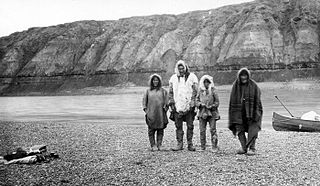
The Colville River is a major river of the Arctic Ocean coast of Alaska in the United States, approximately 350 miles (560 km) long. One of the northernmost major rivers in North America, it drains a remote area of tundra on the north side of the Brooks Range entirely above the Arctic Circle in the southwestern corner of the National Petroleum Reserve-Alaska. The river is frozen for more than half the year and floods each spring.The Colville River and its adjacent hills are home to a variety of Arctic wildlife, including Lake Teshekpuk and Central Arctic caribou herds, and hawks.

The Gwichʼin are an Athabaskan-speaking First Nations people of Canada and an Alaska Native people. They live in the northwestern part of North America, mostly above the Arctic Circle.

The history of Alaska dates back to the Upper Paleolithic period, when foraging groups crossed the Bering land bridge into what is now western Alaska. At the time of European contact by the Russian explorers, the area was populated by Alaska Native groups. The name "Alaska" derives from the Aleut word Alaxsxaq, meaning "mainland".

The question of whether to drill for oil in the Arctic National Wildlife Refuge (ANWR) has been an ongoing political controversy in the United States since 1977. As of 2017, Republicans have attempted to allow drilling in ANWR almost fifty times, finally being successful with the passage of the Tax Cuts and Jobs Act of 2017.

The Porcupine caribou(Rangifer tarandus groenlandicus) is a herd or ecotype of barren-ground caribou, the subspecies of the reindeer or caribou found in Alaska, United States, and Yukon and the Northwest Territories, Canada. A recent revision changes the Latin name; see Taxonomy.
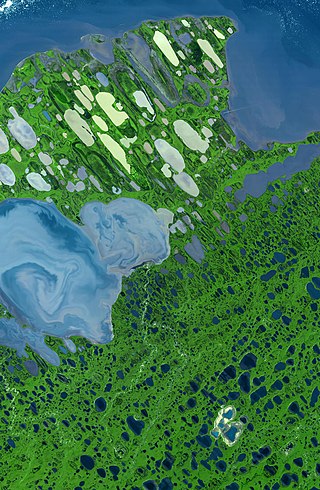
Teshekpuk Lake is the largest lake in Arctic Alaska, at 22 miles (35 km) width on the Alaska North Slope within the National Petroleum Reserve-Alaska, South of Pitt Point, 12 miles (19 km) east of Harrison Bay, 80 miles (130 km) east of Point Barrow. The Teshekpuk Lake region is considered one of the most productive, diverse, and sensitive wetland ecosystems in the entire Arctic, habitat to a variety of arctic wildlife, including the resident Teshekpuk Lake caribou herd of 64,000 animals, large numbers of shorebirds and migratory waterfowl, for whom it is an essential part of the East Asian–Australasian Flyway site network.
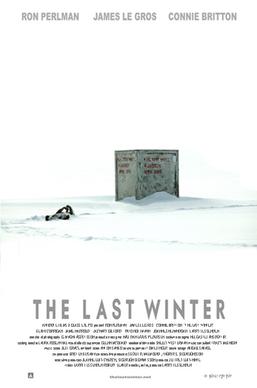
The Last Winter is a 2006 horror film directed by Larry Fessenden. The Last Winter premiered in The Contemporary World Cinema Programme at the 2006 Toronto International Film Festival on September 11, 2006. The script for the film originally featured a more woodsy Alaska with pine trees and it was after a research trip to Prudhoe Bay that they discovered the harsh flat conditions that ultimately ended up in the film.
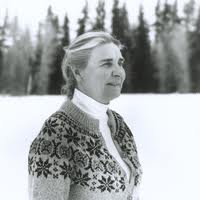
Celia Hunter was an American environmentalist and conservationist. She was conferred the highest award by the Sierra Club, The John Muir Award, in 1991. She was presented the highest award by the Wilderness Society, The Robert Marshall Award, in 1998.
Being Caribou is a 2005 documentary film that chronicles the travels of husband and wife Karsten Heuer and Leanne Allison following the migration of the Porcupine caribou herd, in order to explore the Arctic Refuge drilling controversy. The journey lasted 5 months, starting from the community of Old Crow, Yukon on April 8, 2003 and ending September 8, 2003. The film is produced by the National Film Board of Canada.
Norma Kassi is a native Gwich'in from Yukon Territory, Canada, and a former member of the Yukon Legislative Assembly and former chief of the Vuntut Gwitchin First Nation. She was awarded the Goldman Environmental Prize in 2002, together with Sarah James and Jonathon Solomon. They received the prize for their struggles for protection of the Arctic National Wildlife Refuge (ANWR) from plans of oil exploration and drilling. Oil and gas exploration would disturb the life cycle of the Porcupine caribou, which has been the foundation for the Gwich'in culture for 20,000 years. In 2010 she was elected as Chief of the Vuntut Gwitchin.
Sarah Agnes James is a native Neets'aii Gwich'in from Arctic Village, Alaska, USA, but was born in Fort Yukon "because that is where the hospital was. I grew up part of the time in Fort Yukon and Salmon River, but most of the time in Arctic Village, Alaska."James is a board member of the International Indian Treaty Council. She was awarded the Goldman Environmental Prize in 2002, together with Jonathon Solomon and Norma Kassi. They received the prize for their efforts to protect the Arctic National Wildlife Refuge (ANWR) from plans of oil exploration and drilling. Oil and gas exploration would disturb the life cycle of the Porcupine caribou, which has been a foundation for the Gwich'in culture since approximately 18,000 BC.
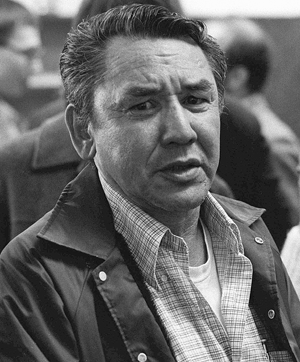
Jonathon Solomon was a native Gwich'in from Fort Yukon, Alaska, USA, and a member of the U.S. delegation to the International Porcupine Caribou Agreement between Canada and U.S. He served as the Traditional Chief of the Gwichyaa Zhee Gwich'in, a lifetime designation, from 2002 until his death in 2006. He was a founding member of the Gwich'in Steering Committee formed by the Gwich'in at Arctic Village in 1988, and dedicated to the preservation of the Porcupine Caribou Herd. He served with distinction until his death.
Woodie West Salmon is a Gwich'in Indian who was a member of the Alaska House of Representatives, representing the 6th District from 2005 to 2011. Woodie was born in the small city of Fort Yukon, Alaska, where his career in politics began. He has spent most of his life, and currently resides in the small town of Chalkyitsik, Alaska, with his wife, Katelyn Englishoe, and serves as Chief of the Chalkyitsik Village Council.
The Alaska Conservation Society was the first grassroots environmental conservation group in the U.S. state of Alaska. It was founded in 1960 to coordinate opposition to Project Chariot, a plan to blast a harbor at Point Hope, Alaska, using nuclear explosions. The group subscribed to environmental preservation and the principles of conservation. After the defeat of Project Chariot, the group decided to fight the proposed Rampart Dam project on the Yukon River. After succeeding, the society took a stance on the development of the Trans-Alaska Pipeline System, encouraging environmental mitigation during and after its construction. This led to the society becoming a major factor in environmental policy within the state. The group operated between 1960 and 1993 and was superseded by the Alaska Conservation Foundation, which was founded in 1980 and still operates today.
Michael Bailey, described as "one of the foremost eco-warriors of our times" according to Rex Weyler, is a founding member of Greenpeace, along with Paul Watson, Patrick Moore, David McTaggart and others. He supervised the original Greenpeace flagship, Rainbow Warrior.

The reindeer is a widespread and numerous species in the northern Holarctic, being present in both tundra and taiga. Originally, the reindeer was found in Scandinavia, eastern Europe, Russia, Mongolia, and northern China north of the 50th latitude. In North America, it was found in Canada, Alaska, and the northern contiguous USA from Washington to Maine. In the 19th century, it was apparently still present in southern Idaho. It also occurred naturally on Sakhalin, Greenland, and probably even in historical times in Ireland.












